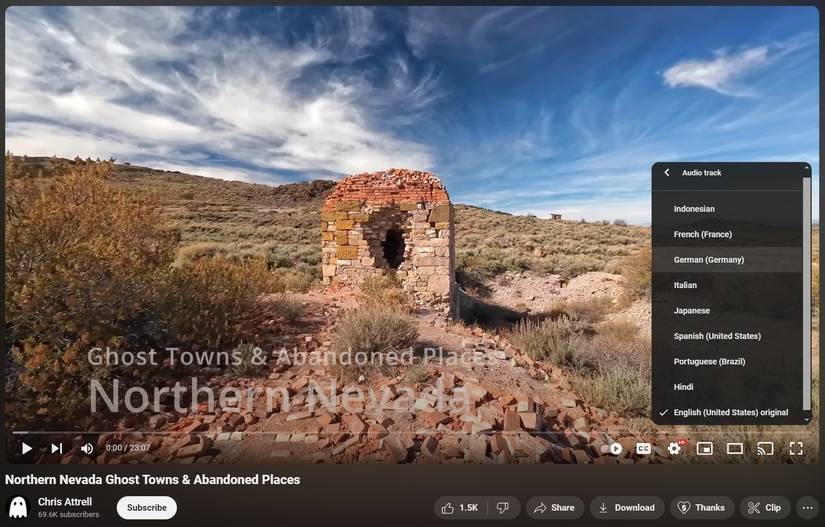YouTube is taking its multilingual audio experiment mainstream. The company announced today that its multi-language audio feature — which allows creators to upload or auto-generate dubbed versions of their videos in dozens of languages — will expand to millions of channels in the coming weeks.
Connecting viewers and creators across continents
A useful accessibility feature, from any angle
The feature’s large-scale adoption marks a huge progression for YouTube’s global ambitions. Until now, multilingual dubbing was limited to a small pilot program. Creators like MrBeast and Mark Rober have been early adopters, with Rober averaging more than 30 dubbed languages per video. According to YouTube, channels using the feature saw over 25% of their watch time come from non-primary language views. On Jamie Oliver’s channel, dubbed videos tripled audience reach.
For creators, the impact can be transformative. Chef Nick DiGiovanni, one of the pilot participants, described dubbing as a way to “share food with so many more people out there.” In an interview with YouTube, he compared choosing languages to picking ingredients for a dish — Spanish was the “no-brainer,” but he also added Italian simply because of his personal heritage.
The rollout comes with two approaches: manual dubs, where creators upload their own voiceovers or hire talent, and automatic dubbing, where YouTube uses machine translation and synthetic voices to generate new tracks. Auto-dubs are switched on by default for eligible channels, though creators can opt out or choose to review dubs before they go live.
Automatic dubbing currently supports translations from English into languages like Japanese, Hindi, Spanish, and Korean, with more being added over time. YouTube warns that auto-dubs may struggle with tone, idioms, and proper nouns, so creators looking for personality-driven accuracy may still prefer human voiceovers.
Importantly, discovery won’t penalize creators who add dubs after publishing. YouTube said dubbed tracks are treated as new versions for the intended audience, ensuring they get a fair shot at recommendation. Monetization also stacks: while costs for impressions vary by market, global dubbing increases overall ad revenue potential.
YouTube is also testing multilingual thumbnails — localized text overlays that match a viewer’s preferred language. DiGiovanni called it “the front door” to global reach, making the video feel native from the very first click.
For viewers, the experience is seamless. When available, a dubbed version will autoplay in their preferred language, while the original track remains accessible in settings. It’s a quiet but profound change: YouTube videos will increasingly feel like they were made for you, wherever you are.
To manage multilingual dubbing on your channel:
- In YouTube Studio on desktop, go to Settings > Upload defaults > Advanced settings.
- To enable or disable auto-dubbing, check or uncheck Allow automatic dubbing.
- To review dubs before they’re published, check Manually review dubs before publishing and choose whether to review all or only experimental languages.
- To manage dubbing for a specific video, go to Content > Languages, then preview, publish, unpublish, or delete tracks for each language.
- Viewers can always switch between the original audio and any dubbed track in the video’s settings menu.


